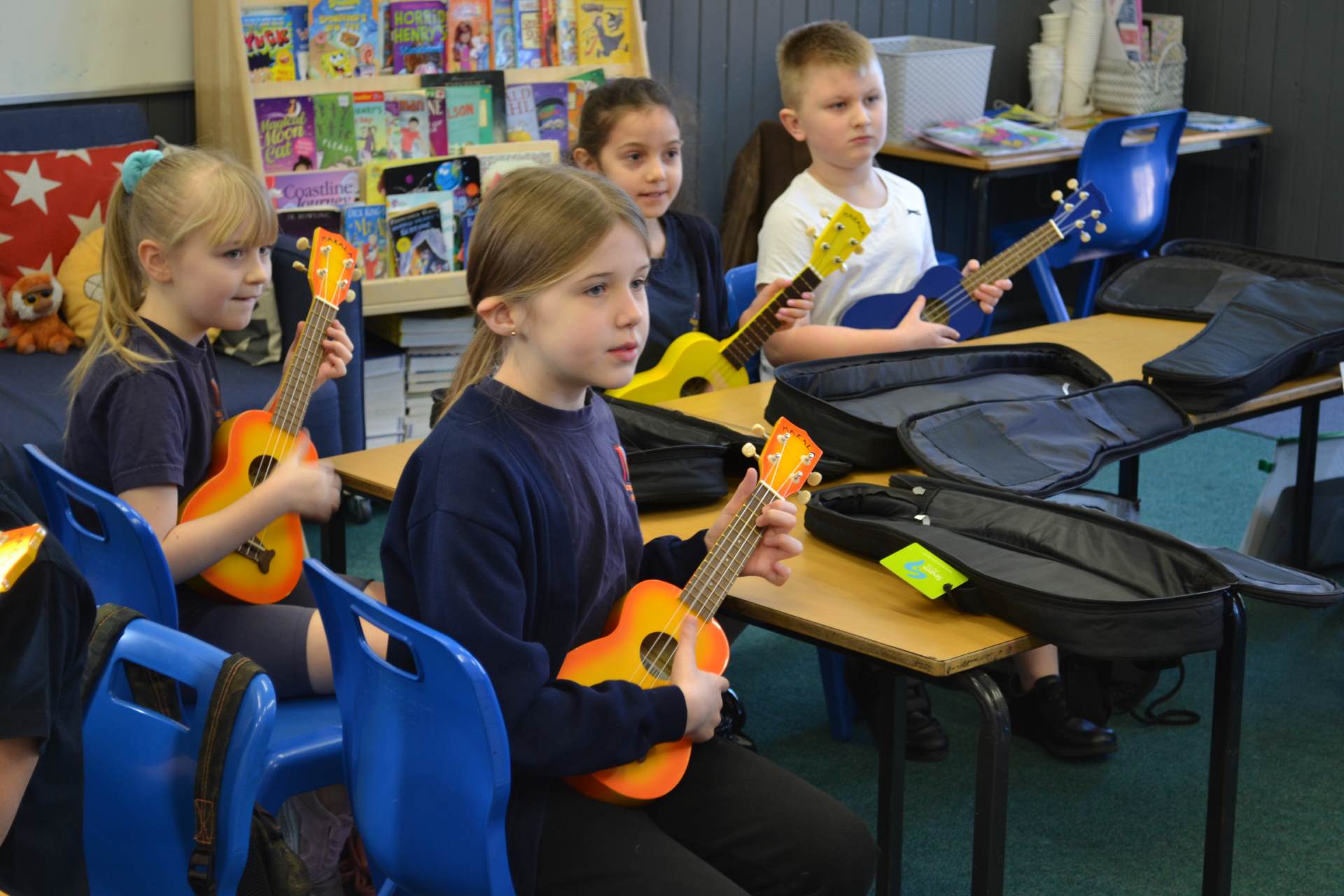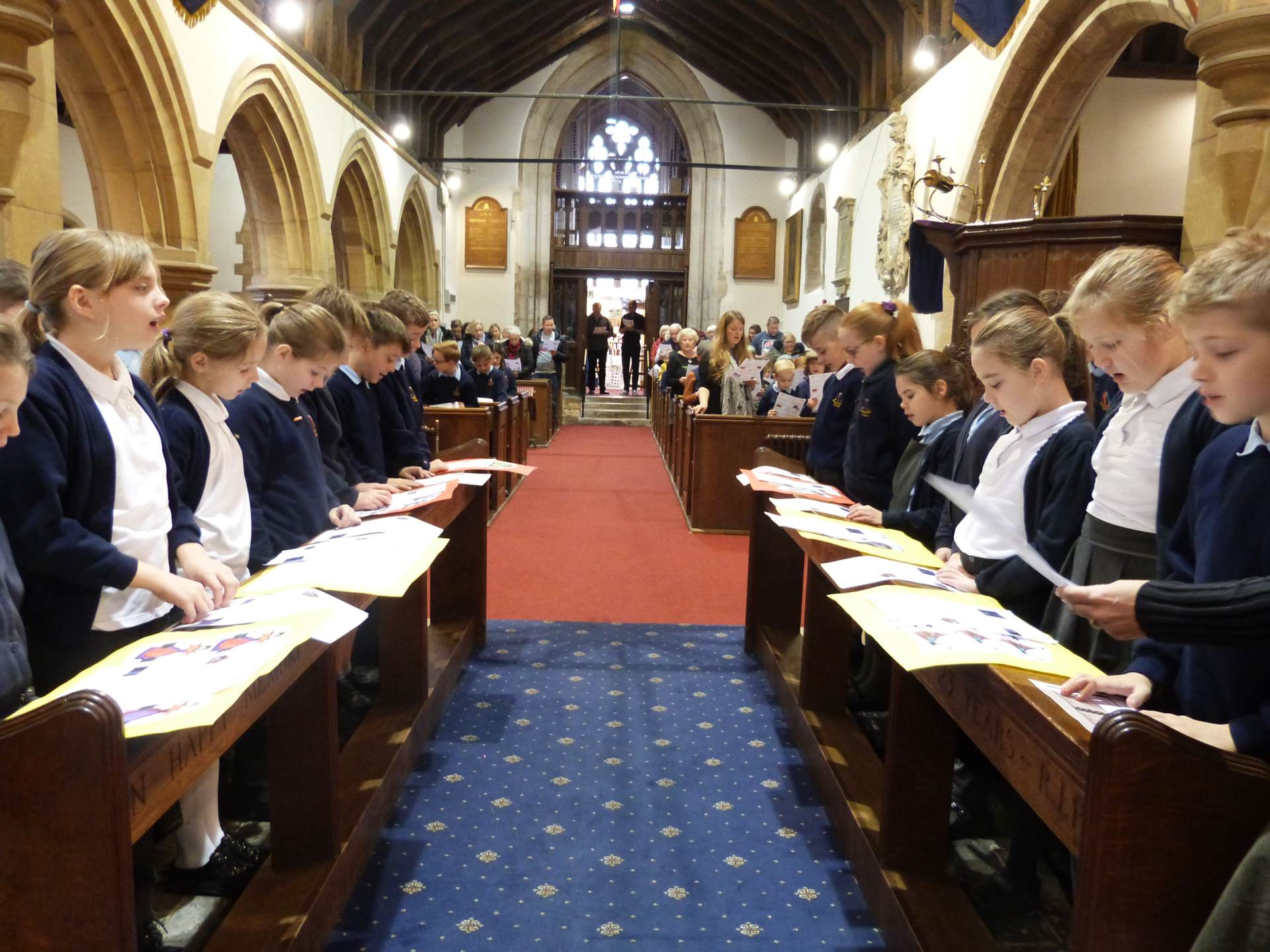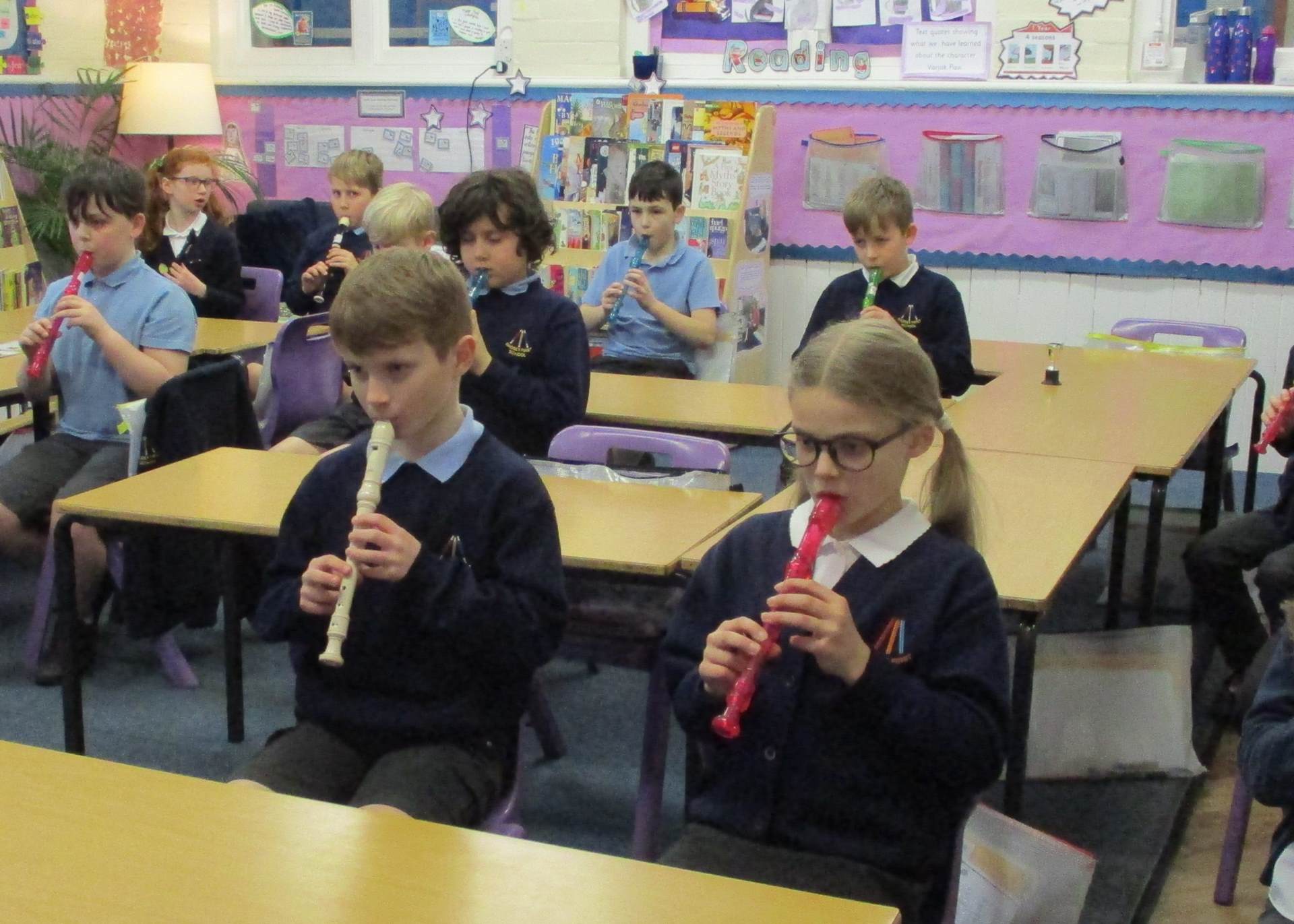Music
Music, as one of the creative arts, is a magical subject. It has the power to ignite all areas of a child’s development and skills at school. Music is more than just learning to play an instrument or read sheet-music – it is about developing motor-skills, focus, social-emotional regulation and helping the body and mind work together. When music is taught well, it exposes children to a rich body of vocabulary and enables them to explore the sounds and meanings of words. Also, above anything else, music is seriously good fun! We aim to engage and inspire pupils to develop a love of music and increase their confidence, creativity and achievement within this subject.
Music sessions provide children with opportunities to listen to, play, perform and experiment with music. These sessions are practical, fun and inclusive, enabling all children to engage critically with music and develop transferable skills.
Each music lesson focuses on a key musical skill. The children experience a range of musical styles, genres and traditions, as well as incorporating pupil's own music choices to compare and contrast against.
Throughout their years at Badsey First School, the children are provided with opportunities to: use their voices expressively and creatively through singing; play untuned and tuned instruments; listen to live and recorded music; and improvise and compose their own music!
Primary National Curriculum for Music in England
Discover more about our Music Curriculum at Badsey from the documents below:



Music in the Early Years
Before starting on the National Curriculum for Music, there a number of prerequisite skills that children in Reception should develop. At Badsey, children and adults sing songs and rhymes together to develop children’s communication and language skills in a fun and engaging way for example, we use the aspects of Phase 1 Phonics to explore body percussion and the use of instruments. Singing and dancing also helps children express their feelings and ideas, and share them with others, which reinforces positive relationships with adults and other children. Music is also excellent for children’s physical development: they learn to move in a range of new ways as they dance in time with the music, or play music instruments to a tune.
Music in Key Stage 1 (Years 1 and 2)
Music lessons in Year 1 and Year 2 allow children to build on what they have learned in the Early Years Foundation Stage. The annual Christmas Nativity production provides a great opportunity for children to showcase their ability to use their voices creatively by singing songs and playing instruments. Beyond this, the children explore music appreciation and begin a journey into the interrelated dimensions of music: pitch, duration, dynamics, tempo, timbre, texture, structure and early musical notation. Charanga Music is a tool we use across the whole school to support the delivery of out music lessons.
Music in Key Stage 2 (Years 3, 4 and 5)
In Years 3 and 4, the Music curriculum is enriched by 10 hours of ukulele lessons for all pupils, funded by the Badsey Trustees. These lessons are delivered by a specialist music teacher from Severn Arts Music. Through these lessons, the children continue to develop their understanding of the National Curriculum expectations. They also have the opportunity to perform at a concert alongside other schools, enriching their cultural capital. These skills are transferred to a new instrument in Year 5 when the children learn the recorder. In their final year of school at Badsey the children learn and perform a show for their parents, providing a further opportunity for them to perform in solo and ensemble contexts. Charanga Music continues to be a tool for supporting wider elements of the Music curriculum in Key Stage 2.
Extra-Curricular Offer
Music forms a big part of the extra-curricular offer at Badsey. Each year, our school choir is central to a wealth of community engagement opportunities – they have a rich history of singing with and to the Freedom Group of adults with learning disabilities, to the Badsey Over-60s Friendship Group, at the Badsey Village Christmas event and the Badsey Flower Show. The choir also enjoy partaking in the annual national Young Voices event.
In partnership with Severn Arts Music, all children at Badsey have the opportunity to learn a musical instrument via peripatetic lessons with specialist teachers who visit each week to deliver group or individual lessons. If your child would like to learn an instrument, please get in touch with school office for further information. If your child is in receipt of Pupil Premium funding, let us know and we may be able to help with funding these lessons.
Parent Advisory Group quote 2022: We want out children to learn to enjoy music - have a go and explore. It's also important to learn about the power of an emotional response to music and understand how it can bring people together collectively - whether that's singing in assembly, playing the ukulele in lessons together or joining the school choir.
Supporting Your Child at Home
Encourage listening skills
Getting children to explore music and describe what they hear is a useful way to help them grow their listening skills. Pick a piece of music to play and while listening to it ask children some simple questions about what they hear e.g:
- How could you describe this music?
- What sounds can you hear in this music?
- How does this music make you feel?
- What does this music make you think of?
Listening and describing in this way can really help a child's communication development.
Play along to music
All children love to make a noise and playing instruments along to a song is a great way of experiencing and exploring dynamics - the volume of sound of a piece of music. Invite your child to play as quietly or loudly as they can with different sound makers or body percussion, e.g. how loudly can we clap our hands, how quietly can we tap a pan with a spoon?
Playing along is also a great way to discover the pulse of a song – essentially the heartbeat of the music, also referred to as a steady beat. Typically the pulse is what people tap their foot to or dance along to when listening to music.
Using a sleeping puppet, invite your child to wake it up by playing loudly and when it goes to sleep to play quietly. Using a pop-up puppet, you can gradually move the puppet up and down and ask your child to play gradually louder and gradually quieter. This also works with an umbrella, gradually opening and closing it.
Explore the different instruments that make up a song
Try playing games and activities as a way of identifying how a variety of instruments combine to make a piece of music
Different instruments in the orchestra have different roles in the music. Listen out for the sounds of families of instruments and the role they have in the music. Instrument families from the orchestra are:
- Brass – instruments such as trumpets, trombones, tuba
- Strings – instruments such as cello, violin, viola
- Percussion – instruments such as drum kit, cymbals, xylophone
- Woodwind – instruments such as flute, clarinet and saxophone
- Keyboard – instruments such as piano, keyboard, organ
You can play games to explore this with children, whilst listening you could stand up when you hear a brass sound, parents could represent the brass section whilst the children could, for example, represent the string section and stand when the strings play. This is a great way to encourage active listening.
Make your own sounds
A great way of exploring music is to experiment with sounds that can be created with mouths. Why not think about:
- What sounds can we make with our lips?
- What sounds can we make with our tongues?
- What sounds can we make with our teeth?
Try encouraging children to describe the sounds they make. By doing this you will be exploring different sounds and encouraging active listening. Playing with mouth sounds is a physical exercise which supports children’s muscles in their mouths, which in turn helps their speech development.
Explore the kitchen – pots and pans are always useful to encourage the exploration of sounds e.g. tapping a pan with a spoon creates a different sound when you tap or ‘swish’ a pan with your hand. Experiment with how many different sounds can be found by playing with kitchen utensils or things you can find outside, e.g. leaves and twigs.
Get moving to music
Tempo refers to the speed in music and a great way for children to explore this is physically. Invite your child to move whilst listening to music and watch how they respond, then follow and copy their ideas. Copying their physical ideas will show them you value their ideas.
Some children may find physically expressing their response to music much more natural than talking about or playing instruments with the music. Try experimenting with a wide range of genres of music and watch how your child responds. Experimenting with music with a range of tempo can be really good fun.
Listening to music from around the world, from a range of cultures will offer children rich listening experiences






